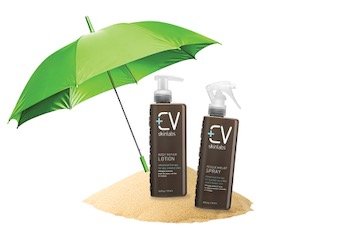
Sunshine health has gotten confusing lately.
We have been told for years to apply sunscreen, avoid the sun, and keep our skin always protected to reduce our risk of skin cancer and premature aging.
But then COVID-19 hit. And we learned that vitamin D could help not only prevent the disease but help reduce the severity of symptoms in those people who contracted it.
We get vitamin D from the sun. Wearing sunscreen diminishes the ability of the skin to supply us with this critical nutrient.
What’s the solution?
Sunshine Health May Be Compromised by Excessive Sunscreen Use
As Americans, many of us aren’t getting enough vitamin D. In a 2010 journal article entitled “Vitamin D Deficiency—An Ignored Epidemic,” author Dr. Zahid Naeem reported that vitamin D deficiency is a global health problem, with over a billion people worldwide vitamin D deficient or insufficient.
In a 2011 study, researchers found that vitamin D deficiency was “common” in the U.S. population, particularly in certain minority groups. The overall prevalence rate of vitamin D deficiency was 41.6 percent, with the highest rate seen in Blacks.
This deficiency gained more awareness during the COVID-19 pandemic. Over and over again, researchers found evidence suggesting that low vitamin D levels were associated with increased COVID-19 infection and mortality.
In 2020, for instance, scientists looked at vitamin D and COVID-19 in 46 countries and found that vitamin D deficiency increased the risk of being infected with the virus, of suffering a more severe form of the disease, and of dying from it.
When Considering Sunshine Health, Consider Vitamin D
We get some vitamin D from our diets, but not enough. Our main source is the sun. When the skin is exposed to UV rays (minus sunscreen), it creates vitamin D.
But what about when we’re wearing sunscreen? In a 2017 study, researchers examined that question and determined that nearly 1 billion people worldwide may have deficient or insufficient levels of vitamin D due to chronic disease and inadequate sun exposure related to sunscreen use.
“People are spending less time outside,” said study author Kim Pfotenhauer, “and when they do go out, they’re typically wearing sunscreen, which essentially nullifies the body’s ability to produce vitamin D.”
Other studies have shown mixed results, but most researchers agree that sunscreen hampers, at least somewhat, the skin’s ability to make vitamin D from sun exposure. Meanwhile, it’s near impossible to get all the vitamin D we need from the diet, as food just doesn’t contain enough.
This has left most people confused. They want to prevent skin cancer, but they also want to be sure they’re getting enough vitamin D to promote good health and a strong immune system.
How to Manage Sunshine Health While Avoiding Skin Cancer
Fortunately, you don’t have to choose. You can promote vitamin D levels without putting your skin at risk.
1. Take a Vitamin D Supplement
This is by far the easiest and most often recommended solution to the vitamin D-skin cancer conundrum. Particularly if you have sensitive skin, very fair skin, or have an elevated risk of skin cancer, this is a better solution than tempting fate by exposing unprotected skin to the sun.
The best-absorbed form of vitamin D is vitamin D-3. The daily recommended amount is between 600 and 800 international units (IUs) a day. The safe upper limit is 4,000 IUs a day. Higher doses can be dangerous, so avoid them.
2. Get a Little Unprotected Exposure Each Day
As with other supplements like calcium, scientists have found that taking too much vitamin D in supplements can be harmful (and may increase the risk of bone fractures). There is also some research showing that the vitamin D we get from sunlight stays active in the body longer than that we get from supplements.
Both sources can increase the level of vitamin D in the body, and we need more research to better determine the differences between them. In the meantime, you can get a bit of both by exposing your skin to the sun for a limited time each day.
How long you need to go without protection depends on where you live (northern latitudes get less sun than southern ones) and the level of melanin (pigment) in your skin. Here are some guidelines:
- Go out when the sun is at its highest, between 11:00 a.m. and 3:00 p.m. Some studies suggest that the skin is most effective at creating vitamin D at these times, which means you can spend less time unprotected.
- Expose about a third of your skin to the sun for the fastest, most efficient results.
- Wear a hat and sunglasses and apply sunscreen to your face to protect from premature aging.
- Start with a baseline of 10 minutes, and adjust according to the melanin level in your skin. Dark-skinned people will need a longer exposure than light-skinned people.
- Start with a short period (say 10 minutes) and gradually build up to allow your skin to adapt.
- If you live in the northern latitudes (farther away from the equator), more of the sun’s rays are absorbed by the earth’s ozone layer. That means you’ll need to spend a little longer in the sun to get the same amount of vitamin D that someone in the lower latitudes would need to spend.
 3. Limit Your Time in the Sun
3. Limit Your Time in the Sun
Time is key when it comes to getting your vitamin D dose without increasing your risk of skin cancer. Though many of today’s health organizations agree that moderate exposure has benefits, they all agree that overexposure is dangerous.
What is overexposure? It depends on many factors, including your personal risk for skin cancer, the level of melanin in your skin, your age, and more. According to Harvard Health, “As for exposure, the ‘dose’ and its timing are crucial.”
Though there are no clear guidelines yet on how much time is enough, the Institute for Quality and Efficiency in Health Care suggests the following:
- 10 Minutes: Those with very light skin, reddish or strawberry blond hair, blue or gray eyes, and sun that doesn’t tan, but burns quickly.
- 20 Minutes: Those with light skin, blond or brown hair, and any eye color, whose skin hardly tans or tans only moderately.
- 30 Minutes: Those with light or brown skin, dark blond or brown hair, gray or brown eyes, whose skin tans easily.
- 50 Minutes: Those with light brown or olive-colored skin, dark brown hair, brown or dark brown eyes, and skin that soon becomes deeply tanned.
- More than 60 Minutes: Those with dark brown or black skin, dark brown or black hair, dark brown eyes, and skin that doesn’t become darker.
The key is to enjoy some unprotected time in the sun if you can. Then make sure you’re protecting yourself the rest of the time with clothing and sunscreen.
4. Know Your Risk
Though anyone can get skin cancer, some people are at a higher risk than others. It’s important to know your risk so you can take the appropriate steps to protect yourself.
The risk is greatest for those who have:
- fair or freckled skin that burns easily
- light eyes
- blond or red hair
Aside from complexion, other risk factors include:
- having a family history or personal history of skin cancer
- having an outdoor job
- living in a sunny climate
Finally, a history of severe sunburns or an abundance (more than 30) of large and irregularly-shaped moles are risk factors unique to melanoma, the most serious type of skin cancer.
 5. Eat More Vitamin-D Rich Foods
5. Eat More Vitamin-D Rich Foods
Though you can’t get all the vitamin D you need from foods, you can get some. Choosing vitamin-D-rich foods can cut down on how much outside exposure you need. Some good options include:
- Fish (salmon, herring, sardines, tuna)
- Fortified Foods (Milk, Milk Substitutes, Tofu, Yogurt, Cereal)
- Cod Liver Oil
- Egg Yolks
- Mushrooms
- Pork Chops
- Beef Liver
Other Ways to be Sunshine Health Smart
In addition to the tips above, you can also try these vitamin-D-friendly recommendations to reduce your risk of skin cancer:
- Protect your skin when you’re driving. About half of the skin cancers in the U.S. develop on the left side of the body. This is the one exposed to the sun when you’re driving. Try applying a transparent film on the driver’s side window.
- Eat more fruits and vegetables. They’re rich in antioxidants, which help fight off free-radical damage from the sun. This damage can trigger cancer growth.
- Upgrade your sunglasses. The delicate skin around the eyes is particularly vulnerable to damaging UV rays.
- Use a retinoid skin cream. These may help prevent basal cell carcinoma, a non-melanoma type of skin cancer.
- Avoid indoor tanning. Tanning beds are classified as carcinogens. Use a spray or lotion self-tanner instead.
How do you manage your sunshine health without losing vitamin D?

